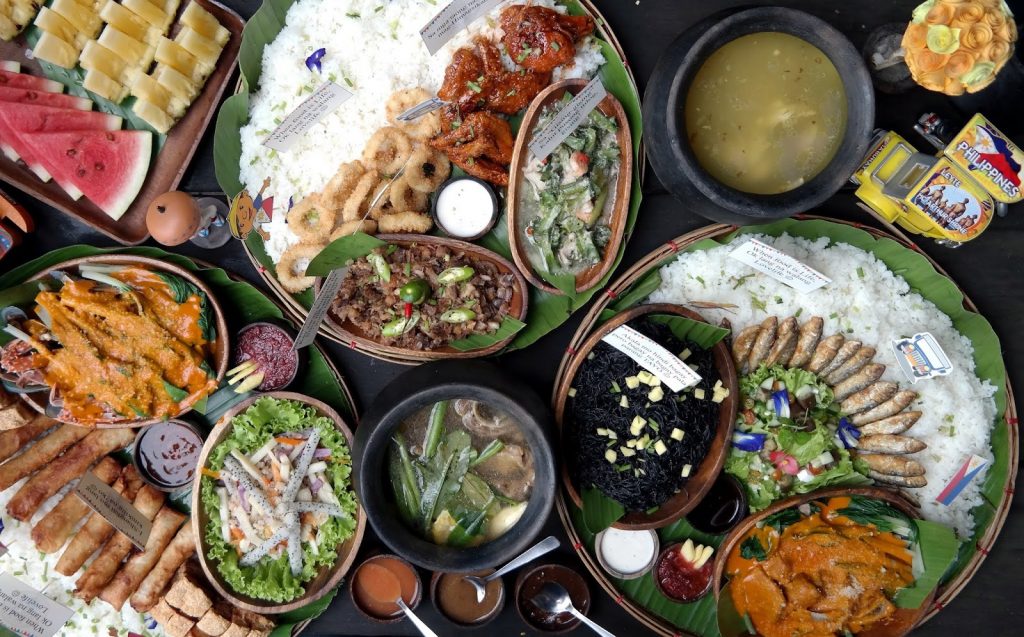In a recent YouGov research, the Filipino cuisine was ranked among the least appreciated cuisines in the globe. According to the report, only 40% of the Philippines valued their native cuisine (Orellana, 2018). However, 70% of Filipinos appreciated cuisines from the western continent (Orellana, 2018). In contrast, an average of 35% percent of nationals from 250000 participants in 24 western countries liked Filipino cuisine (Orellana, 2018). According to Faye Orellana (2018), this prospectus ranked the Philippine cuisine at the bottom three of 35 worldwide cuisines selected by the London Global Market Research team for the study. Notably, in the recent past, Filipino cuisine has been advertised to tourists through the Manilla mainstream broadcast both locally and abroad. To a large extent, Filipino cuisine is a blend of Chinese, Indian, Spanish, and other South East Nations food. This is since the Philippines were colonized for a long by the aforementioned Nations. Despite the Filipino mixture of western ingredients in their cuisine, Filipino foodstuffs remain unappealing to the Western world. Instead, Italian cuisine, prominent for its naturalism ranks as the most acknowledged cuisine in the world. It is essential to study reasons for the low reception of Filipino cuisine in the world despite the Philippine wide assimilation of western culture in the native cuisine.
Objectives
- The central objective for resolving this case is to highlight the causal factors for the global poor reception of the Philippine cuisine. This is significant for the case study since according to Gael Langdon (2019), cuisines attract tourists to the least expected destinations. In this regard, this paper aims to provide urgent solutions for the Philippine cuisine situation to prevent future downward trends in tourist visits. Other objectives are:
- To assess the local perception of native cuisine without western ingredients.
- To present workable solutions for the prevailing cuisine situation in the Philippines
Presentation of the case
The Philippine cuisine case study is an integration of varied cultures into Philippine preferential end products. For instance, the Philippines mix ancient food ingredients from their colonial masters to create a fusion of unique cuisine. While such an act is creative it formulates a new taste that is uncommon with foreigners. In a recent cuisine journal, Jeline Masig (2019) attests Pinoy ingredients such as Batuan and tuba are untraceable in the global ingredient market. The result according to a Philippine chef, Mike Sarti is foreigners find it challenging to distinguish the food products as well as the overall new taste in the end product. Recently, the New York Times posted a comment from an anonymous New York restaurant owner on the above issue. In the comment, the Philippines lacked the entrepreneurial acumen to market their cuisine on a global scale. In response, Nicole Panso, a Philippine national agreed majority of Philippine Nationals are wired for traditional office jobs compared to modern entrepreneurial jobs. A majority of foreigners in the Philippines serve white food compared to indigenous Philippine food. According to a recent survey, most Filipinos fear selling diniguan (a natural home cuisine) under the presumption westerners may detest the pork blood stew. Such prominent viewpoints are explained in the concept of natural relativism in the Philippines. It means the Filipinos are harmonious and naturally tend to please foreigners. Consequently, the Filipinos feel entitled to uphold ancient western cuisine as opposed to the retrieval of ancient Filipino cuisine. Additionally, the Philippines boasts a variety of western ingredients that offsets the naturalism of Philippine cuisine. Furthermore, foreigners feel spiritually disconnected from the cuisine which provokes bad perceptions about Philippine food. Another concern is that Filipinos lack traditionalists to teach lessons on Philippine conventional foods before the colonial error. This is understandable since the nation has been a colonial protectorate for various States over a long time. The above factor has greatly contributed to the western misunderstanding of Philippine cuisine. According to Faye Orellana (2018), the majority of the 20% Japanese that detested Philippine cuisine according to the YouGov report had little information about the Philippine colonial history. Generally, Philippine cuisine is globally unappreciated due to a lack of adequate marketing in the global market. To this end, the Philippine cuisine rank as the topmost prominent cuisine in the globe if the country follows the proposals enlisted below.
Solutions and recommendations
The Philippine government should disburse funds for global marketing of the Country’s cuisine. Second, the Philippines should research ancient Philippine cuisines to revive the native taste of their food products. Third, home restaurants should begin serving native delicacies such as the diniguan as a step to tracing traditional Philippine routes. Fourth, since the Philippine mix ingredients from foreign states, the government should consider programs that expose Philippine chefs to learn from the set countries. Lastly, Philippine chefs should emulate top-ranking cuisine states. For instance, Italy has 99% of home ingredients in their cuisine. Undoubtedly, if the above recommendations are observed, the Philippines will attain global approval of their home cuisine.







